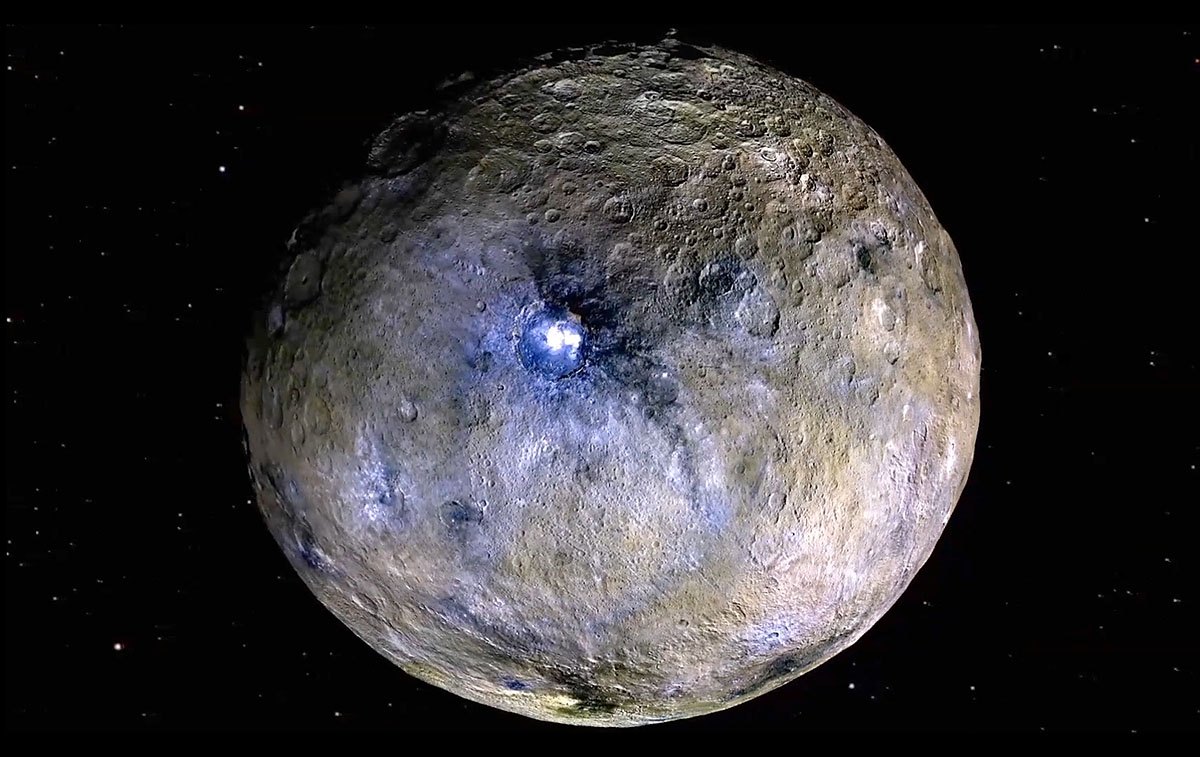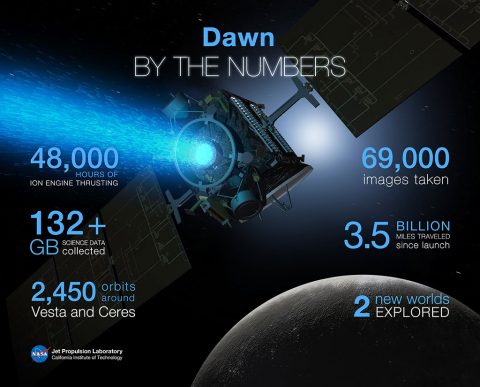Written by Elizabeth Landau
NASA’s Jet Propulsion Laboratory
 Pasadena, CA – On June 30th, just in time for the global celebration known as Asteroid Day, NASA’s Dawn spacecraft completes its primary mission. The mission exceeded all expectations originally set for its exploration of protoplanet Vesta and dwarf planet Ceres.
Pasadena, CA – On June 30th, just in time for the global celebration known as Asteroid Day, NASA’s Dawn spacecraft completes its primary mission. The mission exceeded all expectations originally set for its exploration of protoplanet Vesta and dwarf planet Ceres.
The historic mission is the first to orbit two extraterrestrial solar system targets, and the first to orbit any object in the main asteroid belt, between Mars and Jupiter. On March 6th, 2015, Dawn also became the first spacecraft to enter orbit around a dwarf planet.

Dawn’s advanced ion propulsion system made it possible for the spacecraft to orbit two targets in the main asteroid belt. The spacecraft has logged about 48,000 hours of ion engine thrusting.
Scientists have learned a great deal about these unique, massive residents of the asteroid belt through data from the mission. Dawn has revealed that while Vesta is a dry body, Ceres could be as much as 25 percent water ice by mass.
Dawn also discovered many intriguing features at both bodies — Vesta is home to a mountain whose height is more than twice that of Mount Everest, and Ceres has a crater called Occator with mysterious bright features that continue to spark scientific investigation.
Dawn’s mission is managed by NASA’s Jet Propulsion Laboratory, Pasadena, California, for NASA’s Science Mission Directorate in Washington. Dawn is a project of the directorate’s Discovery Program, managed by NASA’s Marshall Space Flight Center in Huntsville, Alabama.
UCLA is responsible for overall Dawn mission science. Orbital ATK Inc., in Dulles, Virginia, designed and built the spacecraft. The German Aerospace Center, Max Planck Institute for Solar System Research, Italian Space Agency and Italian National Astrophysical Institute are international partners on the mission team.
For a complete list of mission participants, visit:
http://dawn.jpl.nasa.gov/mission
More information about Dawn is available at the following sites:




